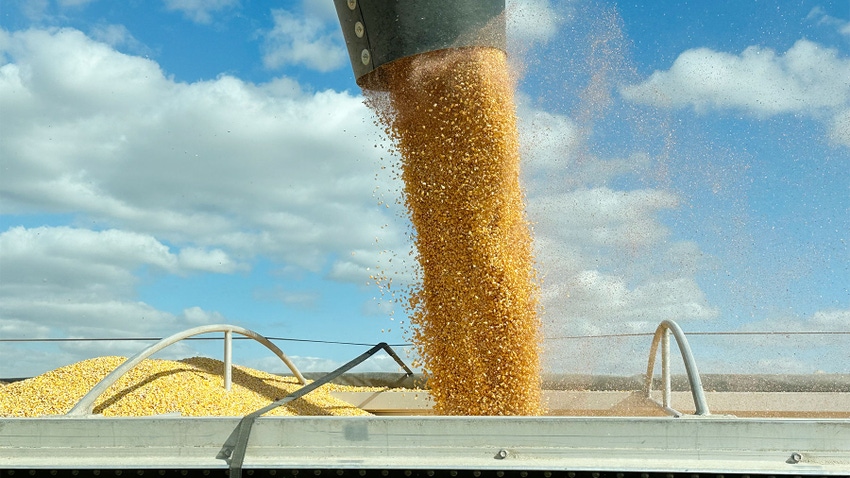April 16, 2024

Last year was a rough year for Minnesota farmers, as lower prices for corn, soybeans and other commodities and challenging profitability for the dairy and hog sectors led to a drastic reduction in farm income.
Despite difficult growing conditions across much of the state, crop yields were close to average. But the prices for corn, soybeans, milk and pork fell during the year, causing an economic storm for many producers in Minnesota. On average, the farmers who submitted data to the analysis in 2023 averaged a net profit of 8 cents for every dollar in gross income, reflecting the high cost and thin margins of farming operations.
After three years of strong profits, the overall median net farm income for Minnesota farms fell to $44,719 in 2023, marking a return to the challenging levels faced from 2013 to 2019. This was down more than 76% from the previous year. The average Minnesota farm saw a reduction in working capital, stagnant retained earnings and limited profitability for the year.
“There was much uncertainty going into the 2023 production year for Minnesota farms. The sharp decline from 2022 profitability levels was not unexpected. Many farms were anticipating decreased commodity prices along with sticky input costs for the year,” says Pauline Van Nurden, Extension economist with the University of Minnesota’s Center for Farm Financial Management. “Most producers were in a good financial spot to handle a down year. The question now is how long these reduced profits will last.”
This analysis includes 2,335 participants in the Minnesota State Farm Business Management programs and 113 members of the Southwest Farm Business Management Association. Participating farmers represent about 10% of Minnesota’s farms with gross incomes over $250,000 annually.
The data are collected by farm management educators and housed in the FINBIN database at U-MN.
Persistently high expenses hamper real gains
The median net income for crop farms was $45,760, more than an 80% drop from the previous year. Crop sale prices during the year were similar to those seen in 2022, but the lower profit stems from higher expenses and reduced inventory values at the end of the year. In other words, crops are likely to be sold in 2024 for a lower price. When considering cash flow projections for the coming year, the majority of farm operations anticipate negative margins.
Low prices and high costs also affected many Minnesota livestock producers. Milk prices declined by 21%; dairy farm profits were down 73% from the previous year. Pork prices declined 16%, with a median net pork farm income loss of more than $32,000.
Beef production was the bright spot last year. Beef producers experienced higher median net farm income as a group. These producers capitalized on the record beef prices offered in 2023.
“Hog producers experienced the most challenging year on record, even worse than 1998. Thankfully, these producers had a strong financial foundation to lean on as they managed through the year. These producers lost nearly $30 per pig sold, which led to losing a half million dollars in working capital and a net worth loss year over year. Thankfully, pork prices have improved in early 2024, easing some challenges for these producers,” says Garen Paulson, lead field staff for the Southwest MN Farm Business Management Association.
“The Dairy Margin Coverage program provided needed support for dairy producers in 2023. This government program assisted producers as they managed through high feed costs and low milk prices,” says Nate Converse, farm business management instructor at Central Lakes College. “Without this program, dairy producers would have experienced a net farm income loss in 2023 as well. The coming year will be challenging too, given milk price futures and limited DMC program payments expected.”
Concern for 2024 prospects
There is much worry related to 2024 farm profitability in Minnesota. Farmers and consumers share many concerns, including inflation, rising interest rates and general economic uncertainty. The global market situation is also worrisome for Minnesota producers. Much of the future concern relates to decreased commodity prices, compressed margins and interest rate increases.
The latest USDA Farm Income Forecast echoes this concern. USDA’s February 2024 forecast predicts inflation adjusted net farm income will decrease more than 25% in 2024. If realized, this net farm income level would be well below the previous 20-year average.
“Input costs are typically ‘sticky’ for farmers. Commodity prices correct quickly, while input costs tend to stay high after they’ve increased. Over the last few years, machinery costs, land rent and fertilizer have all increased. These expenses don’t look like they will come down as fast as commodity prices falling,” Paulson says. “I encourage all farms to know their cost of production and focus on risk management planning for the coming year.”
New programming
In addition to data for traditional commodity agriculture, several FINBIN initiatives added in recent years help address emerging questions in Minnesota agriculture.
New programming includes a beginning farmer program to help with farm transitions. Decision tools are being developed to help address questions related to climate and agriculture. Also added are analyses of value-added farm enterprises, which include secondary enterprises for the farm such as crop custom work operations, trucking enterprises and food sales.
“We are excited to dig into the information related to value-added farm enterprises. The reality today is many farms diversify their operations with ‘side-gig’ enterprises. Minnesota farmers are entrepreneurial, especially those just starting to farm. Value-added enterprises allow the farm to diversify income streams and tap into more niche markets. We hope to learn more about the impact of these value-added enterprises and how they add value to many farm operations,” says Tina LeBrun of the Minnesota State Southern Agricultural Center of Excellence.
Source: University of Minnesota Extension
You May Also Like




